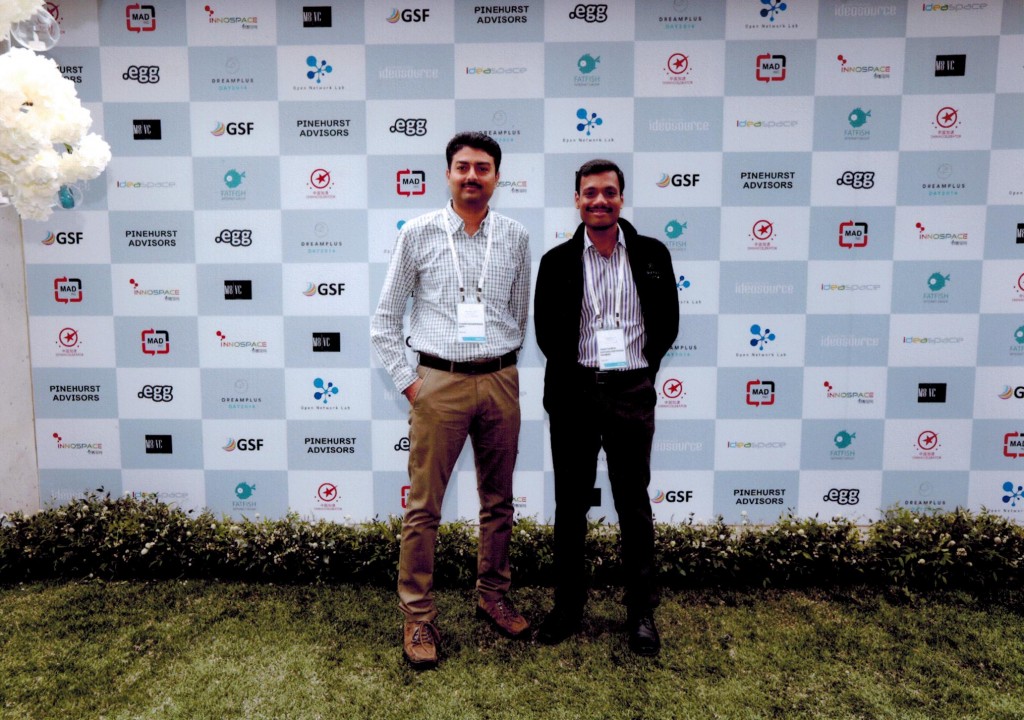Khadim Batti Co-Founded WhatFix along with Vara Kumar. The two of them worked together in the telecom industry for almost 10 years and the entrepreneurial bug bit them. Post starting up, they developed a SEO tool for the SME market, which would crawl the web and identifies the factors that would help website owners to improve their visibility and provide recommendations accordingly. Khadim expected that the business owners will use these recommendations and get benefits and hoped that this will increase the referral traffic to their site. However, he found that the users were not implementing these recommendations and hence they did not see the benefits. The founders had to think in either of these ways to scale the business – 1) Do the SEO services for the SMEs to show them benefits 2) Scale the challenge using Technology. They chose the second option and started trying out several experiments which would help their users to fix the problems right inside their applications.
They built basic UI to collect feedback from their users and kept on iterating. Gradually they realized that the people were giving more feedback on the system of user hand-holding than on the functionalities of SEO platform. They brainstormed for three days to decide if they should continue doing this or pivot and opted for later launcing Whatfix in. I early 2014 They designed whatfix like a technology piece where the users can come to the platform and share an interactive guide of their product. This is equivalent to having a presentation on SlideShare and a video on YouTube but with an option to trigger interactive mode, which can hand-hold users step by step right inside their application.
The fundamental need of the users in a company is what they thought was underserved in the market. When they went in to do a detailed analysis, they found that every company buys so much of enterprise software to solve multiple problems. The users, on the other hand finds it so difficult to use these tools and hence the benefits of these tools are not realized by the companies. The help options provided by the product companies are not that interactive for a non-technical person and no one has the patience and the time to read the documentation, user manuals and learn the product. This leads to a lot of friction. This interactive guide helps in self servicing. Anyone can create, share their interactive guide to their users in their blogs, support pages,wiki’s etc. They developed multiple features of the tool and posted in lots of communities and got great feedback on where all it can be used – Apps, Employees, Customers etc. They went to market to monetize after 6 months of validation and created a landing page that listed all the potential features people would pay for. They wanted to begin engaging with the users and sent a few hundreds of email to the buyers in product companies in Bangalore. They got around 40 positive responses and did remote & personal demonstrations. They figured out how to price, how to negotiate price and understood the expectations of the customers. Then they signed a couple of customers and promised that they will get back with a few features and got those customers on on-board. They are still trying multiple channels and Khadim says that it is too early for them to discard any marketing channel at this stage. The biggest challenge they face in Online Media is that people are not searching for the product they built – Example – Interactive guides. They are trying to createawareness in the market and actively reaching out to people who are not looking out for them.
They went all out on email as a primary way to connect with the customers, since personalized emails worked for them in the past. They expanded this model into other geographies and collected the list of users of multiple software products who might be potential and sent emailers on a weekly basis. Once the enquiries increased, they began connecting with the prospects through an Inside Sales team. They started with one team and they have a three member team focussing on multiple geographies. They also did Content Marketing by creating some users guides on how to build workflows and invited people to join the network. Multiple people began building the interactive guides for their products and exposed it to others which added new users to the network. They are now having a full time community manager and content marketer on-board.
On the sales situations, the smaller companies adopted this quite easily but the larger companies had lots of issues in adopting this. He talks about a sales situation with one of the leading ISV. The first point of contact was a bit junior who took some time to take him to the Decision Maker. They showed demos to the directors and the team got convinced on the product. The Technology team had so many objections on Security, Technology Management and Deployment issues. They wanted the solution to be deployed offline within their network because their product was not hosted on public networks but within private customers networks. At that point in time, Khadim did not have this offline option enabled in the tool. They demonstrated the users workflow and did a small change in the architecture that this solution can still be served from the server with security and the users can export the guide and load it on their own servers. This gave a new use case on how they can market it to the ISVs. Khadim says that the overall sales cycle of the large enterprises was 8 to 9 months and the mid-sized closures would be in between 1 to 2 months.
Khadim’s Advice to early stage entrepreneurs – In his first venture, he did a big bang approach of building the product before talking to the customers and had to do away with more than 50% of the initial features to make the product viable. In the next one, he validated before he went into implementation. He advices founders to validate and then implement. He says that founders should not build a feature unless three or four customers ask for it.
WhatFix today has around 10 employees. They have a few thousands signups and they have few thousands of people using the developed guides on a daily basis. They launched WhatFix in 2014 June in UnPlugged event in Bangalore and they participated in DreamPlus event in Seoul, South Korea in October 2014 as the only startup out of the 11 representing India won an award of USD 300,000 as prize money. They have also recently raised USD 1 Mn Seed Round from Helion Ventures.






